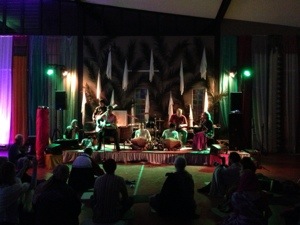3rd annual 64 round chanting day
3rd annual 64 round chanting day
→ ISKCON Scarborough
Three Stages Of Devotional Service 5 “Tiger Slap Test” – Video
→ Prahladananda Swami
PAS_UKRAINE_NOI5-14SEP 2011 from Lilasuka Das on Vimeo.
Three Stages Of Devotional Service 5 Ukraine 2011-09-14
Reuploaded with improved audio quality
Three Stages Of Devotional Service 4 Ukraine 2011-09-13
Three Stages Of Devotional Service 3 “4 Kumara Are Elevated Kanishtas 2011-09-12
Three Stages Of Devotional Service 2 Ukraine 2011-09-11
Three Stages Of Devotional Service 1 Ukraine 2011-09-10
Kirtan, Japa & Krsna Katha Retreat – Bhurijana Prabhu & Jagattarini Mataji
→ ISKCON Melbourne, AU
Kirtan, Japa & Krsna Katha Retreat – Bhurijana Prabhu & Jagattarini Mataji
→ ISKCON Melbourne, AU
Kirtan, Japa & Krsna Katha Retreat – Bhurijana Prabhu & Jagattarini Mataji
→ ISKCON Melbourne, AU
Kirtan, Japa & Krsna Katha Retreat – Bhurijana Prabhu & Jagattarini Mataji
→ ISKCON Melbourne, AU
Kirtan, Japa & Krsna Katha Retreat – Bhurijana Prabhu & Jagattarini Mataji
→ ISKCON Melbourne, AU
Kirtan, Japa & Krsna Katha Retreat – Bhurijana Prabhu & Jagattarini Mataji
→ ISKCON Melbourne, AU
Kirtan, Japa & Krsna Katha Retreat – Bhurijana Prabhu & Jagattarini Mataji
→ ISKCON Melbourne, AU
Kirtan, Japa & Krsna Katha Retreat – Bhurijana Prabhu & Jagattarini Mataji
→ ISKCON Melbourne, AU
Kirtan, Japa & Krsna Katha Retreat – Bhurijana Prabhu & Jagattarini Mataji
→ ISKCON Melbourne, AU
Kirtan, Japa & Krsna Katha Retreat – Bhurijana Prabhu & Jagattarini Mataji
→ ISKCON Melbourne, AU
Kirtan, Japa & Krsna Katha Retreat – Bhurijana Prabhu & Jagattarini Mataji
→ ISKCON Melbourne, AU
The First Regulative Principle
→ Japa Group
Sri Caitanya-caritamrta Antya 11.24 purport
The First Regulative Principle
→ Japa Group
Sri Caitanya-caritamrta Antya 11.24 purport
Interview at Stonehenge!
http://youtu.be/W6Drsndu0dE
→ Mahavishnu Swami
Friday, July 5th, 2013
→ The Walking Monk
Ottawa\Montreal
I seem to live on the road. Today it was via a coachline called Greyhound en route to Montreal with a stopover in Ottawa. I like the front seat so even with transfer I managed to be up front and to get on with bus drivers on both legs on the trip.
Each driver was passionate about his work. They were both cut from the same piece of cloth; determined to get passengers to their destination in a safe and respectful environment.
“ Respect? “ as Aretha Franklin would sing it. Well there was one passenger who just didn't get it. That passenger, with cell phone in hand, had a volume of voice that clearly indicated she felt she was the only person on the planet. There were at least three of us, including the driver, who had an eye-rolling session, annoyed by the woman's self-centeredness. It was not just the loudness but the length of the conversation that got under our skin.
Enough was enough and the bus driver grabbed for the hand-held PA system, “ Attention ladies and gentlemen... “He went on with his message about RESPECT and so we were finally relieved until two hours later when session 2 began.
Some people just don't get it. Some folks have a passion for driving (as expressed before) but to the point of driving you crazy. Anyways, a mutual amiable communication became established with the coach driver and I over the ladies ignorance in addition for our passion for travel, and my version of it – pilgrimage. When not in conversation I would read, or chant softly with my beads as an aid or look out the window savouring the day when I can once again trek Highway 7 and be that pilgrim. How I relished that time, ten years ago, even the adventure and chivalry of defending myself of nasty deer flies. In the end, all was rewarding, all was gratifying.
Disembarking the bus and thanking the second driver of the day I left for the last moments on foot to reach, contemplating and appreciating the responsible work of the person who drives. Come to think of it, it's Krishna who amongst other duties, takes the reigns of the horse and demonstrates an expertise behind the wheel, so to speak.
5 KM
Friday, July 5th, 2013
→ The Walking Monk
Ottawa\Montreal
I seem to live on the road. Today it was via a coachline called Greyhound en route to Montreal with a stopover in Ottawa. I like the front seat so even with transfer I managed to be up front and to get on with bus drivers on both legs on the trip.
Each driver was passionate about his work. They were both cut from the same piece of cloth; determined to get passengers to their destination in a safe and respectful environment.
“ Respect? “ as Aretha Franklin would sing it. Well there was one passenger who just didn't get it. That passenger, with cell phone in hand, had a volume of voice that clearly indicated she felt she was the only person on the planet. There were at least three of us, including the driver, who had an eye-rolling session, annoyed by the woman's self-centeredness. It was not just the loudness but the length of the conversation that got under our skin.
Enough was enough and the bus driver grabbed for the hand-held PA system, “ Attention ladies and gentlemen... “He went on with his message about RESPECT and so we were finally relieved until two hours later when session 2 began.
Some people just don't get it. Some folks have a passion for driving (as expressed before) but to the point of driving you crazy. Anyways, a mutual amiable communication became established with the coach driver and I over the ladies ignorance in addition for our passion for travel, and my version of it – pilgrimage. When not in conversation I would read, or chant softly with my beads as an aid or look out the window savouring the day when I can once again trek Highway 7 and be that pilgrim. How I relished that time, ten years ago, even the adventure and chivalry of defending myself of nasty deer flies. In the end, all was rewarding, all was gratifying.
Disembarking the bus and thanking the second driver of the day I left for the last moments on foot to reach, contemplating and appreciating the responsible work of the person who drives. Come to think of it, it's Krishna who amongst other duties, takes the reigns of the horse and demonstrates an expertise behind the wheel, so to speak.
5 KM
Thursday, July 4th, 2013
→ The Walking Monk
Toronto, Ontario
The Warped Tour is a music circuit of “ transy dancy ” type that moves around North America. There are the faithful fans of the tour that follow wherever the bands play. It's a culture and a chunk of that culture are the Hare Krishnas. How so? Madhukari is the name of a Krishna monk who comes up from the States not to hear the concert but to distribute books on higher consciousness. He, with four other brahmacharis travel the circuit and came to town for an overnight stay at the concert before moving on to Buffalo. Followers of the Grateful Dead circuit were known as the Dead Hoods but you would never call these boys the Warped Heads because they are absolutely straight in their aim and mission.
I was sitting down at an appreciation dinner for the former council members of our temple operations when Madhu walked in. He and his team are also praiseworthy for their austere lifestyle, travelling about with no real fixed address, no girlfriends, no restaurants, no meat, fish or eggs, no drugs or drinks. Sound blend?
Not a chance! These guys are dead serious and they are loving life. They have picked up on the essence of monkism. Shining examples of renunciation. They resort to being celibate as much as they understood what it means to “ celebrate “.
10 KM
Thursday, July 4th, 2013
→ The Walking Monk
Toronto, Ontario
The Warped Tour is a music circuit of “ transy dancy ” type that moves around North America. There are the faithful fans of the tour that follow wherever the bands play. It's a culture and a chunk of that culture are the Hare Krishnas. How so? Madhukari is the name of a Krishna monk who comes up from the States not to hear the concert but to distribute books on higher consciousness. He, with four other brahmacharis travel the circuit and came to town for an overnight stay at the concert before moving on to Buffalo. Followers of the Grateful Dead circuit were known as the Dead Hoods but you would never call these boys the Warped Heads because they are absolutely straight in their aim and mission.
I was sitting down at an appreciation dinner for the former council members of our temple operations when Madhu walked in. He and his team are also praiseworthy for their austere lifestyle, travelling about with no real fixed address, no girlfriends, no restaurants, no meat, fish or eggs, no drugs or drinks. Sound blend?
Not a chance! These guys are dead serious and they are loving life. They have picked up on the essence of monkism. Shining examples of renunciation. They resort to being celibate as much as they understood what it means to “ celebrate “.
10 KM
Just a little update.
→ OppositeRule
Yesterday I went to the Rathayatra in Harrisburg, PA, with my son Caitanya, and it was my first time in kirtan with devotees since three years ago. It was a good time, and I was able to connect a little with a few devotees. Later, at night my legs were sore from dancing.
Also, I’ve been keeping up with sixteen rounds a day again since more than two weeks ago.
It’s a little bizarre after having thought I would never do this again. Imagine trying to serve Krishna for fifteen years but feeling oneself a failure, rejected. So I quit, thinking Krishna either won’t accept me or was an hallucination or dream.
Asking anyone, I think I could find a lot more agreement with the latter than with the first there. I therefore tried to forget Krishna, and went and became part of the atheist community. I began following the big atheist speakers and identifying with what they were saying. I remember finding videos of Christopher Hitchens arguing anti-religion, listening to them for several hours one day and thinking he was really great. The next days news indicated he died that day, perhaps while I was watching, and it made me think of Krishna. I noticed the atheist community argued against the Abrahamic religions but apparently didn’t know Bhagavad-gita As It Is. So I thought I should present it to them. I don’t know if I convinced anyone else to try it, I guess not, but I convinced myself.
Unfortunately it seems to mean that despite giving what I felt was my best effort to serve Krishna for fifteen years, He was not impressed and let me leave His service to commit spiritual suicide, eventually rescuing me a little but somehow still leaving me too captivated by Maya, with a material conception of life, as if Krishna consciousness were some kind of chore that I am unfit to accomplish.
10 July 2013 – Disappearance Day of Sri Svarupa Damodara Gosvami
→ ISKCON Desire Tree
10 July 2013 – Disappearance Day of Sri Sivananda Sena
→ ISKCON Desire Tree
10 July 2013 – Disappearance Day of Sri Svarupa Damodara Gosvami
→ ISKCON Desire Tree
10 July 2013 – Disappearance Day of Sri Sivananda Sena
→ ISKCON Desire Tree
BG 09.22 with Braja Bihari Prabhu “Krishna’s Grateful Love” – Video
→ Prahladananda Swami
BG 09.22 with Braja Bihari Prabhu “Krishna’s Grateful Love” 2010-07-10 Dallas
Taken from www.Rupa.com
Special "Kirtan Sunday Feast" with Madhava and Dravida Prabhus
→ The Toronto Hare Krishna Blog!
The kirtan-filled evening will be a special treat and you won't want to miss it! The tentaitve schedule is as follows:
5:00pm to 6:00pm - Opening Kirtan
6:00pm to 7:00pm - Kirtan with Madhava Prabhu
7:00pm to 7:30pm - Presentation with Dravida Prabhu
7:30pm to 8:00pm - Vegetarian Feast (Prasadam)
8:00pm to 10:00pm - Kirtan with Madhava
This will be Madhava's first time attending one of our Sunday Feasts, so please plan on staying back late! The kirtan will go well into the night! Hare Krsna!
Special "Kirtan Sunday Feast" with Madhava and Dravida Prabhus
→ The Toronto Hare Krishna Blog!
The kirtan-filled evening will be a special treat and you won't want to miss it! The tentaitve schedule is as follows:
5:00pm to 6:00pm - Opening Kirtan
6:00pm to 7:00pm - Kirtan with Madhava Prabhu
7:00pm to 7:30pm - Presentation with Dravida Prabhu
7:30pm to 8:00pm - Vegetarian Feast (Prasadam)
8:00pm to 10:00pm - Kirtan with Madhava
This will be Madhava's first time attending one of our Sunday Feasts, so please plan on staying back late! The kirtan will go well into the night! Hare Krsna!
Completed english Nava-vraja Mahima offered to Radhe Syama, the harvest festival and Gundica-marjana
→ SivaramaSwami.com
Are Women Less Intelligent Part 2
→ HH Bhakti Caitanya Swami
HH Indradyumna Swami 24th June
→ Gouranga TV - The Hare Krishna video collection
HH Indradyumna Swami 24th June
An Official Mystery
→ Seed of Devotion
"Why, sure!" I replied.
"Let me just go ask him, and I'll get back to you. We'll leave soon, so just stick around,"
I nodded.
I had just flown in from India that very morning after being gone from America for almost an entire year. I kid you not when I say that tears stung my eyes when I walked through the corridors of Newark Airport. I was on American "soil"! I felt unabashedly patriotic.
Today was also the day that I had officially moved into the Bhakti Center - to give this Center and this city a whirl in service for awhile, see how things go.
A half an hour later, Dhanurdhara Swami ushered me to join him and Radhanath Swami, but the time was running late so we hailed a cab. As usual, I felt nervous to be around my spiritual master, who is such a huge guiding force in my life. The two swamis got into the back and I got into the front. How surreal, I thought. I'm riding in a cab with such eminent personalities.
When we got out of the cab at Union Square Park, I could hear the distant thrum of the mridanga drum and the soft 'ting' of the karatalas. We were getting closer to the harinam.
I circled around to join the two dignified Swamis in their flowing orange robes. Radhanath Swami caught my eye. A mysterious smile lit up his face and he intoned, "Bhakti lata, today I officially give to you New York City."
My eyes widened. "Really?" That sounded pretty important, but I was puzzled. "What does that mean?"
"In time, everything will be revealed," he replied enigmatically.
I knit my eyebrows. I turned to Dhanurdhara Swami, "Maharaj, what does that mean, that Radhanath Swami has officially given to me New York City?"
"Ah, this is called Prabhudatta Desha,"
"Prabhupada Desha?" I said, trying to clarify.
"No, Prabhudatta, with a 't.' Prabhudatta Desha,"
"Prabhudatta Desha," I said carefully. The three of us were now walking abreast, weaving through crowds, approaching the harinam.
"Yes," Dhanurdhara Swami said, "This means 'the place of residence that the guru gives to you as your main place of service,'"
I was stunned. I looked over to Radhanath Swami. He grinned. "I told you that everything would soon be revealed."
A week later and I am realizing that his words will take a lifetime to be revealed.
An Official Mystery
→ Seed of Devotion
"Why, sure!" I replied.
"Let me just go ask him, and I'll get back to you. We'll leave soon, so just stick around,"
I nodded.
I had just flown in from India that very morning after being gone from America for almost an entire year. I kid you not when I say that tears stung my eyes when I walked through the corridors of Newark Airport. I was on American "soil"! I felt unabashedly patriotic.
Today was also the day that I had officially moved into the Bhakti Center - to give this Center and this city a whirl in service for awhile, see how things go.
A half an hour later, Dhanurdhara Swami ushered me to join him and Radhanath Swami, but the time was running late so we hailed a cab. As usual, I felt nervous to be around my spiritual master, who is such a huge guiding force in my life. The two swamis got into the back and I got into the front. How surreal, I thought. I'm riding in a cab with such eminent personalities.
When we got out of the cab at Union Square Park, I could hear the distant thrum of the mridanga drum and the soft 'ting' of the karatalas. We were getting closer to the harinam.
I circled around to join the two dignified Swamis in their flowing orange robes. Radhanath Swami caught my eye. A mysterious smile lit up his face and he intoned, "Bhakti lata, today I officially give to you New York City."
My eyes widened. "Really?" That sounded pretty important, but I was puzzled. "What does that mean?"
"In time, everything will be revealed," he replied enigmatically.
I knit my eyebrows. I turned to Dhanurdhara Swami, "Maharaj, what does that mean, that Radhanath Swami has officially given to me New York City?"
"Ah, this is called Prabhudatta Desha,"
"Prabhupada Desha?" I said, trying to clarify.
"No, Prabhudatta, with a 't.' Prabhudatta Desha,"
"Prabhudatta Desha," I said carefully. The three of us were now walking abreast, weaving through crowds, approaching the harinam.
"Yes," Dhanurdhara Swami said, "This means 'the place of residence that the guru gives to you as your main place of service,'"
I was stunned. I looked over to Radhanath Swami. He grinned. "I told you that everything would soon be revealed."
A week later and I am realizing that his words will take a lifetime to be revealed.
Kirtan and Bonfire night
→ Ramai Swami

In July, Madreya Prabhu from New Govardhana, organised a Bonfire and Kirtan night at the school hall . The activities kick started at 4.pm with stalls that featured arts and crafts, shadow puppets, yoga classes and Indian dance lessons.
There were a couple of fresh organic fruit and vegetable stalls and Krsnagana set up an outside prasadam tent. Inside, Danesvara was in charge of the Krsna art gallery, as well as serving prasadam that consisted of samosas, pizza, donuts and natural juices.
At 7.pm the gurukula students chanted sanskrit invocation mantras that were well received by the audience of more than 400 guests. At 7.30pm Janardhan from Brisbane led wonderful bhajans to the accompaniment of harmonium, mrdanga and other instruments.
The evening ended with kirtan by the Lore of Gravity Bhajan Band that had the crowded chanting and dancing in ecstasy.
Blessed
→ travelingmonk.com
Lecture – SB 1.13.22 But Death, I Chanted & Took Vitamins – Video
→ Prahladananda Swami
Srimad Bhagavatam 1.13.22 by HH Prahladananda Swami in Timisoara, 30 July, 2012. from Lilasuka Das on Vimeo.
SB 01.13.22 But Death, I Chanted & Took Vitamins 2012-07-30 (English Only)
Don’t think this wont happen to you. Fire alarm and old age not annoyance but warning sign. Book distribution.
Sravanam Kirtanam Festival 2013, Italy
→ KKS Blog
Kadamba Kanana Swami will be participating in a Holy Name festival this weekend (6-7 July) held at Villa Vrndavan, Italy. A live-stream will be available on mayapur.tv. His schedule is as follows:
Saturday 10:00-11:30 and 18:15-19:15
Sunday 18:30-19:30

Czech summer camp 2013
→ KKS Blog
 Finally, we are back to reporting on Kadamba Kanana Swami’s travels. I was not with Maharaja for over three weeks, and Markandeya Dasa (Amsterdam) travelled with him through Slovenia, England, Germany and Croatia. Markandeya will be sending us pictures and other media, and as soon as we get it, we will share it with you. For now, we will catch up with the latest of Maharaja’s travels.
Finally, we are back to reporting on Kadamba Kanana Swami’s travels. I was not with Maharaja for over three weeks, and Markandeya Dasa (Amsterdam) travelled with him through Slovenia, England, Germany and Croatia. Markandeya will be sending us pictures and other media, and as soon as we get it, we will share it with you. For now, we will catch up with the latest of Maharaja’s travels.
I rejoined Maharaja in the Czech Republic (20 June). Every year, Maharaja attends the “tabor”, the summer camp, which gathers the whole Czech yatra at a holiday village near the city of Brno, which is also located close to the Slovakian border hence many devotees from Slovakia joined in as well. Furthermore, the camp was blessed with the presence of Bhakti Vaibhava Swami, Dhanavir Goswami and Navina Nirada Prabhu.
Kadamba Kanana Swami gave several lectures – two Bhagavatam classes and a seminar. Although the title of the latter was The six Goswamis, the focus fell more on Krsnadas Kaviraja Goswami and his taking shelter of the lotus feet of Sri Sri Radha Madhana-mohan in order to be able to write about Caitanya Mahaprabhu’s pastimes. On Sunday (23 June), Maharaja, together with Dhanavir Goswami, held an initiation ceremony outdoors, where Kadamba Kanana Swami initiated one disciple from the Prague temple, blessing him with the name Balarama Dasa! For the rest of the summer camp, it was kirtan, kirtan and kirtan! Bhakti Vaibhava Maharaja changed this year’s schedule to build in daily evening bhajans. While he delighted the devotees with Aindra melodies, Kadamba Kanana Maharaja forced them into dancing wildly to rocking KKS-tunes.
Below, you can find the links to these classes and kirtans, as well as a slide-show depicting the summer camp. To download audio files, just right-click on a title and ‘save target as’. In case you cannot view the slide-show, then please visit flickr.
Lectures
KKS – Seminar – 6 Goswamis – Czech Summer Camp – 22 June 2013
KKS – Initiation Lecture – Czech Summer Camp – 23 June 2013
KKS – SB. 8.2.33 – Czech Summer Camp – 24 June 2013
KKS – SB. 8.3.1 – Czech Summer Camp – 25 June 2013
Kirtans
KKS – Kirtana I – Czech Summer Camp – 21 June 2013
KKS – Kirtana II – Czech Summer Camp – 21 June 2013
KKS – Kirtana III – Czech Summer Camp – 22 June 2013
Pictures












